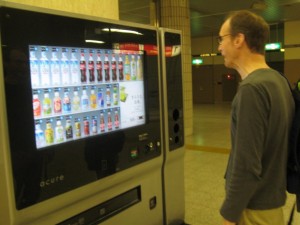Social Issue Based Brand Transformation: Strategies of the Luxury Beauty Brand SK-II
SK-II, a leading luxury beauty brand in Japan, was experiencing a decline. Its customers were aggressively courted by rivals, and changes in society made it difficult for the brand to stay compelling to its customers. SK-II must formulate a new strategy to fundamentally transform itself, bolster relevance and transcend the competition. The case describes the market landscape, economic, societal and technological changes, as well as SK-II’s prior strategies and their implementation. In developing the new strategy, the brand needs to decide:
- whether and how it should speak to social issues such as gender equality and incorporate those issues into its brand purpose;
- how digital technologies should be effectively integrated into every aspect of the brand experience;
- how it should synergistically leverage social media, metaverse and other media platforms; and
- how it should work with established celebrities as well as emerging influencers to create a prestigious and yet engaging brand image.
The brand needs to thoroughly assess the pros and cons associated with the potential options, craft its strategy and develop a detailed implementation plan.
Breaking the curse of national particularism: EMNCs as pioneers of globalization
According to INSEAD Professor Amitava Chattopadhyay, an expert of the leading-edge trend of game-changing EMNCs, emerging markets are a gold mine of innovations. MNCs need to deep-dive into local customers for truly understanding them, which is a tough challenge for Japanese companies both in and outside emerging markets.
What is missing in Japanese firms? – Even MNCs lack true understanding of customers
The second part of the interview with INSEAD Professor Amitava Chattopadhyay, on the management approach and latest trends of EMNCs defying the common wisdom.
This time the discussion explores what is missing in Japanese companies.
How are EMNCs and Japanese firms different in their management strategies?
EMNCs are starting to globalize seriously. Their management strategies differ from the those of firms from developed countries. How should Japanese firms think about EMNCs? This time, we bring the latest info on EMNCs from Professor Amitava Chattopadhyay of INSEAD.
Brave new world of building brands.
“For you sir, a canned coffee. And, for madam, perhaps a nice cold tea.” This is the brave new world of marketing through vending machines and elsewhere. In Japan, at the Tokyo railway station, machines developed by JR East Water Business Co., a subsidiary of railway firm JR East Co., has begun to deploy vending machines with sensors that allow the machine to determine the characteristics of an approaching customer using facial recognition, and then recommend drinks based on a customer’s age and gender–the machine displays the recommended options on a screen rather than have the products visible through a window as in most vending machines today. In Japan, the machine recommends canned coffee to men, for instance, since men tend to like these more. If you are an older man, however, i.e., above 50, the recommendation shifts to green tea. According to a report by Reuters, sales are three times higher at these new vending machines compared to those from regular vending machines.

This technology appears to be gaining traction. Tesco, the UK’s biggest grocer by sales, is experimenting with the technology. Cameras that scan customers to determine their gender and age as they queue at the till to pay are used to target them with the most appropriate point-of-purchase advertising in Tesco’s 450 petrol stations, according to the FT.
This approach, used properly, can potentially benefit manufacturers, distributors, and consumers.
- From the manufacturer’s perspective, one can customize the messaging to be relevant to a specific target segment and match access to specific brands or brand variants much more precisely to individual consumers, thereby reducing costs and increasing revenues and margins.
- From the distributor’s point of view, the vending machine can effectively serve a broader spectrum of consumers as the machine can carry a significantly broader selection of beverages while at the same time keeping the size of the vending machine manageable by selectively displaying a smaller range to any given customer.
- From the consumer’s point of view, by offering a more targeted selection, the consumer can more efficiently choose, since it is well established that offering too large a choice makes the choice task more challenging from the point of view of the consumer. Such technology could also be used to block underage consumers from accessing products meant for adults as the pudding dispensing machine from Kraft Foods below.

Whether the technology will work and how widely it will be adopted remains to be seen, but chances are, it is coming to street corners and retail outlets near you!



